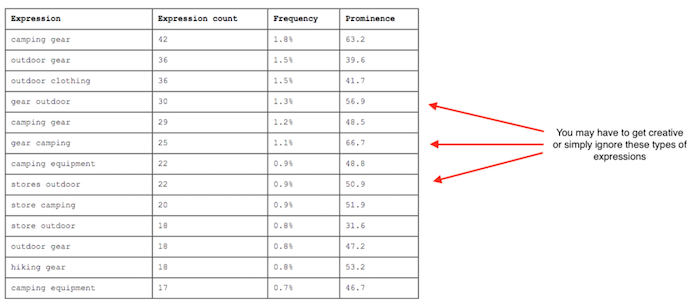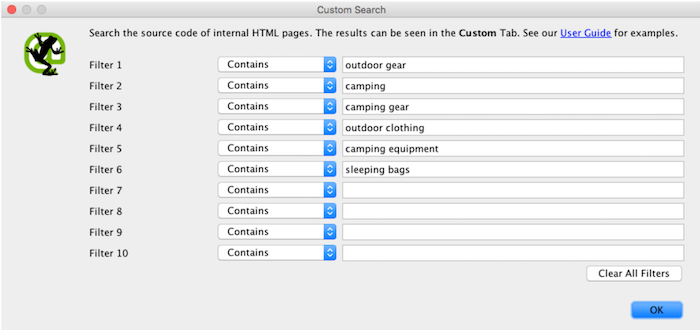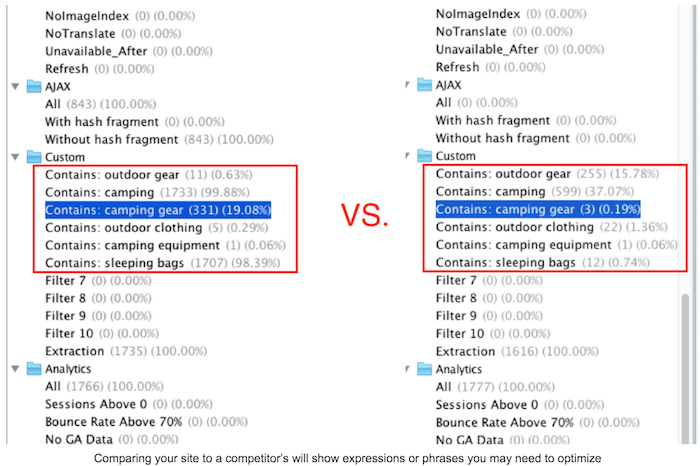Using micro-focused keyword strategies can be a simple, impactful approach to improving your SEO results.
When analyzing websites that are already successful from an SEO perspective, it’s always surprising to see how many easy long-tail wins are possible but aren’t being optimized for.
Long-tail keyword targeting is nothing new. We know users are quickly adjusting their queries to more conversational, semantic searches. I mean, there’s a reason that Amazon, Apple and Google are pushing into voice search.
Why then, are we as SEOs and marketers still targeting ‘motorcycle parts’ and ‘refrigerators’ when we know people are searching for ‘vintage Honda motorcycle parts’ and asking questions like ‘Does LG make a counter depth refrigerator?’ People are looking for answers — not keywords.
And yet we’re seeing a trend of SEOs focusing on head terms, rather than optimizing for long-tail. While head terms have huge search volume, they don’t necessarily drive qualified traffic. It’s time SEOs worked to drive users who are ready and willing to buy.
Apply a different approach: micro-targeting
Micro-targeting is a three-step process. First, discover large amounts of long-tail keywords that share common phrases or expressions. Second, identify very specific opportunity gaps on your site where those phrases are lacking. Finally, make small adjustments to individual components of your site or content to better address long-tail keyword groups, not specific keywords, that are easier to rank for.
There are several ways to approach a micro-targeting strategy using different tools, workflows, and processes. Below, you’ll find six points to consider as you execute a long-tail micro-targeting strategy.
1) Don’t completely replace your head term efforts with micro-targeting long-tail keywords.
While I have seen long-tail strategies keep many companies afloat, those strategies shouldn’t be your be-all end-all. For the most part, long-tail keywords will convert better.
On the other hand, head terms can drive massive volume for your sites – and the more traffic, the higher your opportunity for conversion. Consider long-tail keyword targeting supplemental to the larger goal of head term targeting, and a secondary activity to optimizing for head terms.
2) Not every customer is the same, so don’t assume they search the same.
I’m from Salt Lake City. Living here has its perks, including access to outdoor activities. When I search for outdoor gear, I search for ‘top rated daypacks’ and ‘lightweight gore-tex rain shells,’ not ‘outdoor gear.’ However, someone I’m going hiking with this weekend may search for ‘affordable daypacks online’ and ‘men’s waterproof rain shell.’
There is no single way of optimizing for the differences in customers and their searches, which is exactly why finding trends like ‘daypacks’ and ‘rain shell’ are key to phrase-level micro-targeting.
Find the commonalities or trends among a wide range of searchers’ queries, and optimize for them. Also, realizing you won’t be able to optimize for everything will save you a lot of stress. Instead, look for phrase and expression trends within long-tail terms that are worth your effort or that span a number of queries.
3) Use more than one tool for keyword research and discovery.
The biggest mistake I see when trying to micro-target long-tail keywords is that SEOs stop digging too soon. The more keywords you discover, the more likely you’ll find a trend.
One of my favorite methods for continued discovery is taking an export from Google Keyword Planner for several head terms (for example, ‘outdoor gear,’ ‘camping gear,’ and ‘outdoor clothing’) then plugging that entire export into a tool like Term Explorer’s Bulk Keyword Tool. Term Explorer’s tool helps me to further diversify and expand my keyword pool. Übersuggest can also help diversify keyword focuses.
4) Find common phrases or expressions to associate between keywords.
The core purpose of micro-targeting is to find similarities between keywords and expressions those keywords contain.
Don’t forget: you aren’t going to be able to target everything for everyone. What you can do is target common expressions or threads between a variety of keywords to narrow your focus on small wins that have value.
There are some really great free or affordable tools for discovering phrase and expression trends. Personally I’ve found Textalyser to be a quick option that allows for a bulk check and then presents the data in an easy-to-understand format.
The data can be pulled into Excel and aggregated to find common expressions that appear between two, three and four keyword strings. You may be surprised to find a quality correlation of five to ten common expressions across 800–1200 keywords.
While using tools like this, keep in mind that many of the expressions and phrases, as well as the keyword input in them, may be grammatically incorrect. It’s up to you to find ways to these expressions together in usable combinations or simply ignore them for optimization and content creation.
5) Analyze and adjust existing content and optimization first.
While jumping into new content creation is all well and good, it’s important to look at the current content on site and optimize existing pages for opportunities to micro-target keyword phrases.
Anything from title tags, H1 tags, and even image alt tags could be under-optimized. Using Screaming Frog’s custom configuration or a similar tool, you can quickly analyze phrase gaps that need better optimization in your current efforts.
If you want to get even more targeted, you can run these phrase crawls against competitors to compare their keyword targeting gaps to yours.
6) Develop new content where necessary, if expression gaps hold enough value.
I know this may sound like the most obvious point of this discussion, but often the biggest mistake with this expression-targeted approach is that SEOs focus too much on optimizing content and elements that are already live on site.
Looking at the last example, it’s clear there is opportunity to target ‘camping equipment’ expressions and terms for the site on the right.
While you could alter content or elements already on site, it could prove more useful to provide specific pieces of content targeting these expressions that simultaneously offer a unique, targeted experience for users searching for them.
If you’re able to silo the master keyword list you started with into these expression-focused silos it will help you better organize your long-tail terms into topical categories. This document can then be handed off to your copywriters or content strategists to help the team develop more collaborative strategies and content pieces.
Final thoughts
Long-tail keyword targeting and micro-targeting expressions can be a great ‘small win, big return’ strategy. Because expressions span such wide varieties of keywords, the opportunity to rank for variations of long-tail terms can be seemingly endless.
Once you get into the mindset of finding and addressing expression and phrase gaps in your long-tail strategy you’ll start seeing content and optimization opportunities you never thought to look for.
Dave Hutton is the SEO Manager at Clearlink, a full-funnel customer acquisition firm based out of Salt Lake City, Utah. You can connect with Dave on LinkedIn.
The article Six ways to improve your micro-targeted long-tail keyword strategy was first seen from https://searchenginewatch.com





No comments:
Post a Comment